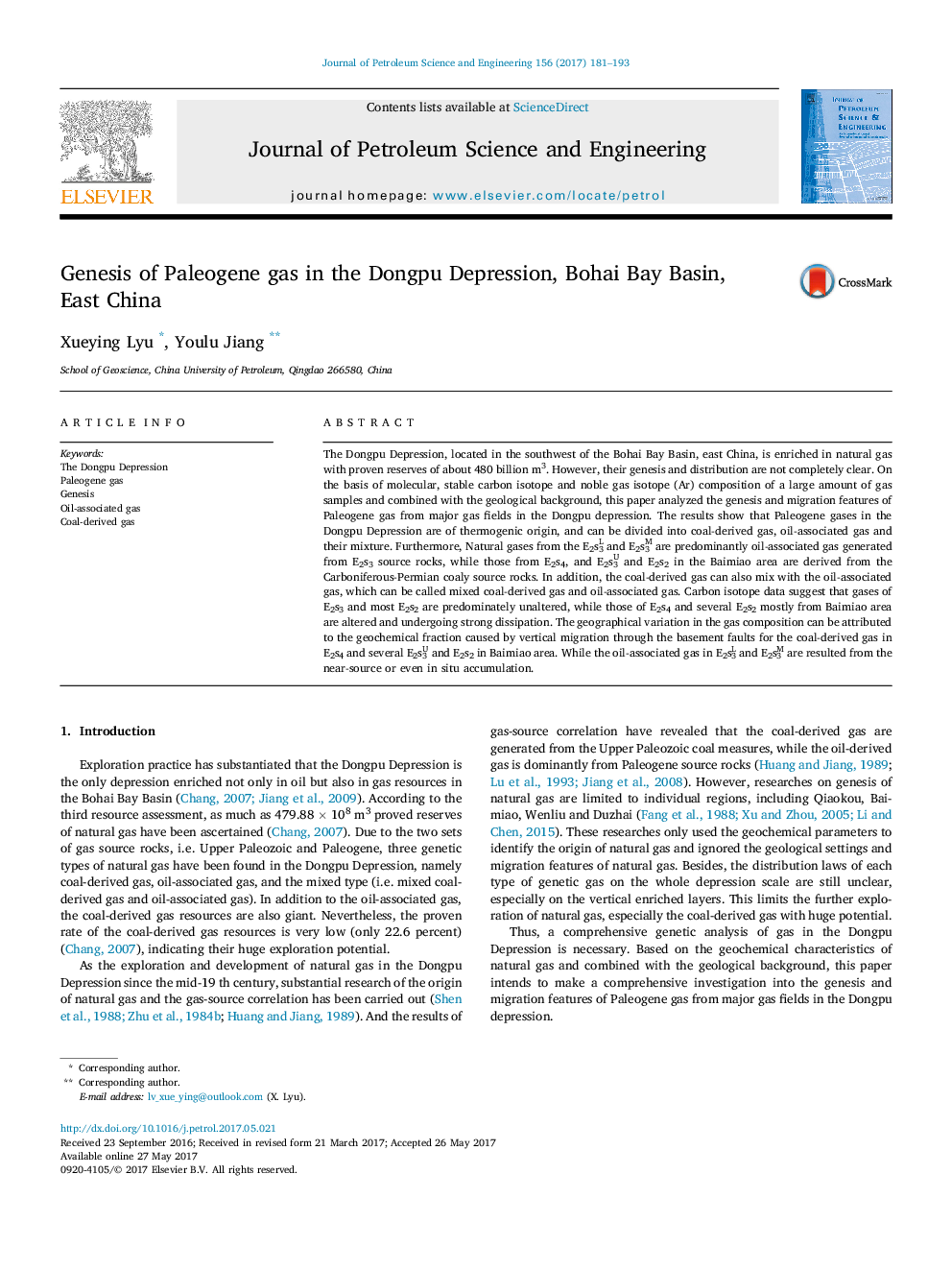| Article ID | Journal | Published Year | Pages | File Type |
|---|---|---|---|---|
| 5484100 | Journal of Petroleum Science and Engineering | 2017 | 13 Pages |
Abstract
The Dongpu Depression, located in the southwest of the Bohai Bay Basin, east China, is enriched in natural gas with proven reserves of about 480 billion m3. However, their genesis and distribution are not completely clear. On the basis of molecular, stable carbon isotope and noble gas isotope (Ar) composition of a large amount of gas samples and combined with the geological background, this paper analyzed the genesis and migration features of Paleogene gas from major gas fields in the Dongpu depression. The results show that Paleogene gases in the Dongpu Depression are of thermogenic origin, and can be divided into coal-derived gas, oil-associated gas and their mixture. Furthermore, Natural gases from the E2s3L and E2s3M are predominantly oil-associated gas generated from E2s3 source rocks, while those from E2s4, and E2s3U and E2s2 in the Baimiao area are derived from the Carboniferous-Permian coaly source rocks. In addition, the coal-derived gas can also mix with the oil-associated gas, which can be called mixed coal-derived gas and oil-associated gas. Carbon isotope data suggest that gases of E2s3 and most E2s2 are predominately unaltered, while those of E2s4 and several E2s2 mostly from Baimiao area are altered and undergoing strong dissipation. The geographical variation in the gas composition can be attributed to the geochemical fraction caused by vertical migration through the basement faults for the coal-derived gas in E2s4 and several E2s3U and E2s2 in Baimiao area. While the oil-associated gas in E2s3L and E2s3M are resulted from the near-source or even in situ accumulation.
Keywords
Related Topics
Physical Sciences and Engineering
Earth and Planetary Sciences
Economic Geology
Authors
Xueying Lyu, Youlu Jiang,
